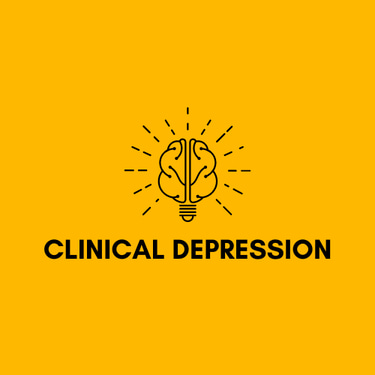For Questions: Text (833)233-0869
Telehealth for Anxiety and Depression: A Comprehensive Guide to Remote Mental Health Care


In today's fast-paced world, where stress and mental health issues like anxiety and depression are increasingly common, access to timely and effective care is essential. However, many people face obstacles such as geographical barriers, time constraints, or the stigma associated with seeking help. Telehealth, the practice of using digital technology to deliver health services remotely, has emerged as a powerful tool in addressing these challenges. This article explores the benefits, processes, and considerations of using telehealth for anxiety and depression, offering a comprehensive guide to those seeking mental health support.
Understanding Anxiety and Depression
Before delving into the role of telehealth, it’s important to understand what anxiety and depression are, as these terms are often used interchangeably but refer to distinct conditions.
Anxiety is a natural response to stress, characterized by feelings of worry, nervousness, or fear. While occasional anxiety is normal, anxiety disorders involve persistent and excessive worry that interferes with daily activities. Common types of anxiety disorders include Generalized Anxiety Disorder (GAD), Panic Disorder, Social Anxiety Disorder, and Specific Phobias.
Depression, on the other hand, is a mood disorder characterized by persistent feelings of sadness, hopelessness, and a lack of interest or pleasure in activities once enjoyed. Depression affects how a person feels, thinks, and handles daily activities. Major Depressive Disorder (MDD) is the most common form, but there are other types, such as Persistent Depressive Disorder (dysthymia) and Bipolar Disorder, which includes episodes of depression.
The Rise of Telehealth in Mental Health Care
Telehealth has revolutionized the way healthcare services are delivered, particularly in the field of mental health. The COVID-19 pandemic accelerated the adoption of telehealth, making it a mainstream option for individuals seeking therapy, counseling, and psychiatric care. But even beyond the pandemic, telehealth for anxiety and depression continues to grow in popularity due to its convenience, accessibility, and effectiveness.
Why Choose Telehealth for Anxiety and Depression?
Accessibility and Convenience: Telehealth eliminates the need for travel, allowing patients to access mental health care from the comfort of their homes. This is particularly beneficial for individuals living in rural areas or those with mobility issues.
Flexible Scheduling: Telehealth platforms often offer more flexible scheduling options, making it easier to fit therapy sessions into a busy lifestyle. Evening and weekend appointments are more readily available than in traditional in-person settings.
Reduced Stigma: Many individuals feel uncomfortable seeking mental health care due to the stigma associated with it. Telehealth offers a level of anonymity that can reduce this barrier, encouraging more people to seek the help they need.
Cost-Effectiveness: Telehealth can be more affordable than traditional therapy, with lower costs associated with transportation and often reduced fees for virtual sessions. Many insurance plans now cover telehealth services, making it a more accessible option.
Continuity of Care: Telehealth allows for continuous care, even when a patient moves to a different location or if their preferred therapist relocates. This continuity is crucial for maintaining progress in treatment.
How Telehealth Works for Anxiety and Depression
Telehealth for anxiety and depression typically involves several key components:
Initial Assessment: The process often begins with an initial assessment conducted via video conference or phone call. During this session, a mental health professional will evaluate your symptoms, discuss your medical history, and develop a treatment plan tailored to your needs.
Therapy Sessions: Cognitive Behavioral Therapy (CBT), one of the most effective treatments for anxiety and depression, is commonly offered through telehealth. These sessions are conducted in real-time via video calls, allowing for face-to-face interaction between the therapist and patient. Other therapeutic approaches, such as Dialectical Behavior Therapy (DBT) and Acceptance and Commitment Therapy (ACT), are also available through telehealth.
Medication Management: For some individuals, medication may be an important component of treatment. Telehealth allows for regular check-ins with a psychiatrist or primary care provider to monitor the effectiveness of medication, adjust dosages, and manage any side effects.
Support Groups and Workshops: Many telehealth platforms offer access to virtual support groups and workshops, providing a sense of community and additional resources for managing anxiety and depression.
Ongoing Monitoring: Telehealth platforms often include tools for ongoing monitoring, such as symptom trackers and mood diaries. These tools help patients and providers track progress and make informed decisions about treatment.
Choosing the Right Telehealth Platform
With the growing number of telehealth platforms available, it’s important to choose one that meets your specific needs. Here are some factors to consider:
Licensing and Accreditation: Ensure that the platform and its providers are properly licensed and accredited. This guarantees that you’re receiving care from qualified professionals who adhere to industry standards.
Range of Services: Look for a platform that offers a comprehensive range of services, including therapy, medication management, and support groups. This ensures that all aspects of your mental health care can be managed in one place.
Technology Requirements: Consider the technology requirements of the platform. Some may require a stable internet connection and a device with a camera, while others may offer services via phone. Ensure that the platform is compatible with your devices and that you’re comfortable using the necessary technology.
Insurance Coverage: Check whether the platform accepts your insurance and what services are covered. Some platforms offer sliding scale fees or payment plans for those without insurance.
User Experience: Choose a platform that is user-friendly and offers good customer support. Reading reviews and asking for recommendations from your healthcare provider can help you find a platform that meets your expectations.
Benefits of Telehealth for Different Demographics
Telehealth for anxiety and depression offers unique benefits across various demographics:
Children and Adolescents: Young people often feel more comfortable in familiar environments, making telehealth a good option for them. It also reduces the disruption to their school schedules and extracurricular activities.
Working Professionals: For those with demanding jobs, telehealth provides the flexibility to attend therapy sessions without taking time off work. It can also be a discreet option, helping to maintain privacy.
Elderly Patients: Older adults may face mobility challenges or have difficulty traveling to appointments. Telehealth ensures they receive the care they need without the added strain of commuting.
Caregivers: Individuals caring for family members, whether children or elderly relatives, often have limited time for their own self-care. Telehealth allows caregivers to access mental health support while managing their responsibilities.
Potential Challenges and Considerations
While telehealth offers numerous benefits, it’s important to be aware of potential challenges:
Technology Barriers: Not everyone has access to reliable internet or the necessary devices to participate in telehealth sessions. This can be a significant barrier for some individuals, particularly those in low-income households.
Privacy Concerns: Privacy is a major concern when it comes to online health services. Patients should ensure that they have a private space for their sessions and that the telehealth platform uses secure, encrypted technology to protect their information.
Quality of Care: Some individuals may feel that telehealth lacks the personal connection of in-person therapy. It’s important to choose a provider who is experienced in delivering telehealth services to ensure the highest quality of care.
Insurance and Payment Issues: While many insurance plans cover telehealth, there can still be issues with coverage and reimbursement. Patients should clarify these details with their provider and insurance company beforehand.
The Future of Telehealth for Anxiety and Depression
The future of telehealth looks promising, with continued advancements in technology and an increasing acceptance of digital mental health services. As telehealth becomes more integrated into the healthcare system, it’s likely that we’ll see even more innovative solutions for managing anxiety and depression remotely.
Emerging trends include the use of artificial intelligence (AI) to provide personalized treatment recommendations, virtual reality (VR) for immersive therapy experiences, and mobile apps that offer on-demand mental health support. These innovations have the potential to further enhance the effectiveness and accessibility of telehealth for anxiety and depression.
Conclusion
Telehealth for anxiety and depression represents a significant advancement in mental health care, offering a convenient, accessible, and effective solution for those in need. Whether you’re seeking therapy, medication management, or simply looking for support, telehealth provides a flexible and user-friendly option that can be tailored to your specific needs.
As telehealth continues to evolve, it’s likely to become an increasingly important part of the mental health care landscape, helping more people access the support they need to lead healthier, happier lives. If you’re struggling with anxiety or depression, consider exploring telehealth as a viable option for your treatment and take the first step towards better mental health today.
©2025
Clinical Depression
For Questions: Text
(833) 233-0869
